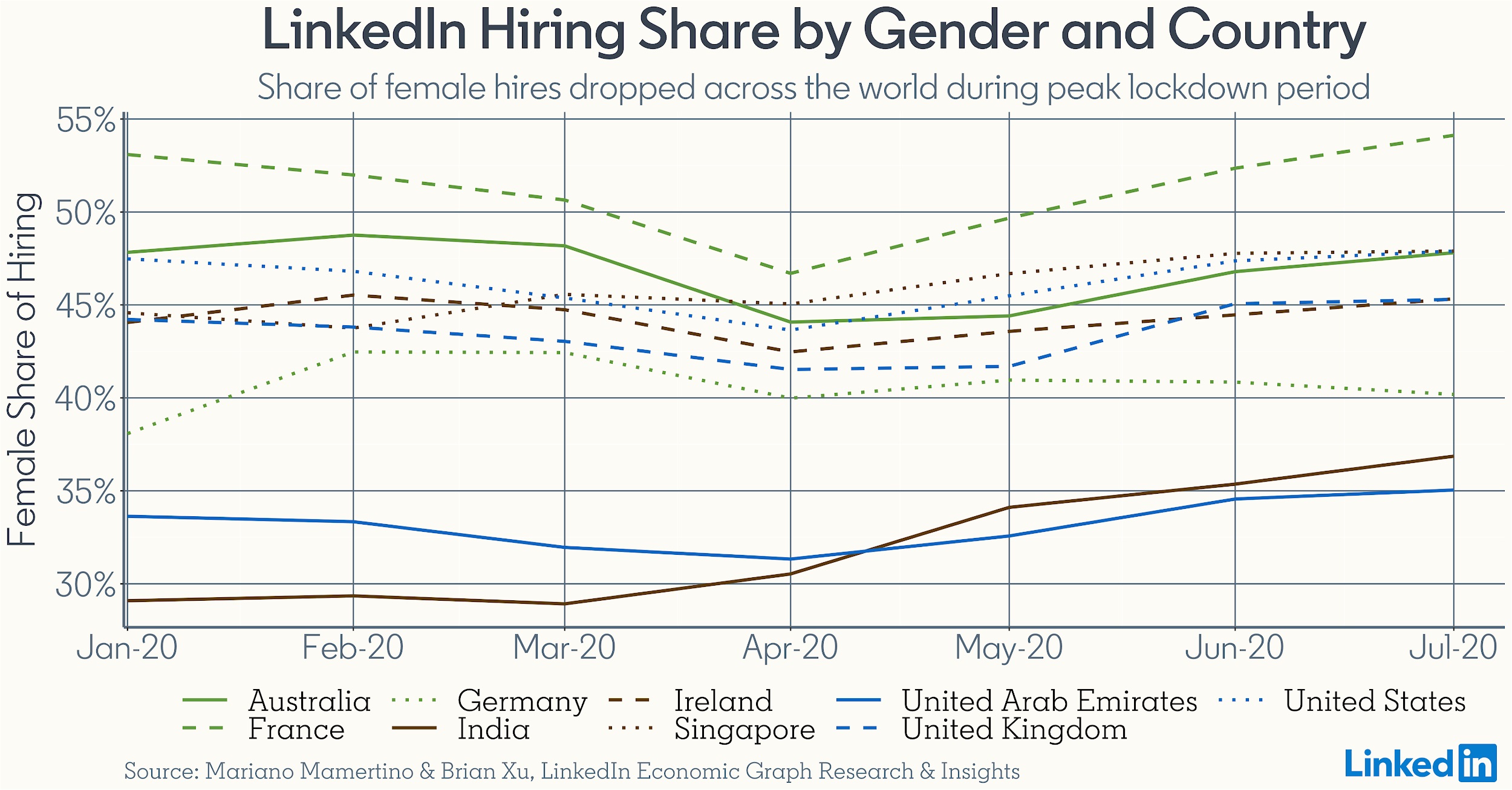
UAE female hiring data recovers after initial drop during Covid-19 lockdown
LinkedIn data finds share of female hires dropped across the world during peak lockdown period
As governments manage reopening schools, data sheds light on impact of lockdown measures for women
Data underscores importance of flexible working policies to support women’s employment and career progression
Dubai,UAE
Sallam Sallam
Lockdown measures put in place to contain the spread of Covid-19 led to a drastic drop in female hiring in April 2020, before recovering in June and July as restrictions were gradually lifted, according to a new data from LinkedIn, the world’s largest professional network.
Globally, the lockdowns have had a more severe impact on the share of women being hired. The data finds that the hiring of women globally – across multiple industries – followed a U-shaped trajectory in 2020.
In the UAE, female hiring reached its lowest point in April when it fell to 31.3% and then recovered above the 2019 average by July 2020. The share of monthly female hires in the UAE saw an upward trajectory from May onward, reaching 35% in July 2020 and exceeding the 2019 average of 33.5%.
Globally too, female hiring reached a low in April, with women only accounting for 40.6% hires, before recovering in June and July to around 44.5%. As governments around the world manage school reopening policies, this data sheds light on the economic impact of lockdown measures on working women, who are more likely to be looking after children, and underscores the importance of flexible working policies.
The UAE is ranked 120th in the Global Gender Gap Index 2020, issued by the World Economic Forum in collaboration with LinkedIn, followed by Kuwait (122) and Tunisia (124). MENA labour markets are generally characterized by low female participation, the Index added.
The LinkedIn data also show that female hiring improved globally as restrictions lifted and that in most countries, female hires have now returned to levels seen before the pandemic. However, women started from a lower baseline in most countries, and need to make up for the loss of hires in March/April.
With more demands on their time and higher levels of stress, the risk of women leaving the workforce becomes greater and has the potential to put gender parity in the workplace at stake. Employers must be flexible and make accommodations to help women remain in employment.
Karin Kimbrough, Chief Economist at LinkedIn, said: “In terms of gender, women are bearing the brunt of the global pandemic when it comes to employment opportunities and career progression. We’ve seen on LinkedIn that working mothers are struggling to balance ever-demanding workloads with increased childcare and household responsibilities and the concern is that many are considering reducing their working hours or retreating from the workforce as a result.
“Our ability to avoid more widespread, permanent losses in women’s employment hinges on schools reopening and employers creating more flexible work schedules. Without this, we’ll have a very real and serious risk of losing many women from the workforce. The unfortunate reality is that the longer that this goes on, the more women will have to make the impossible choice between caring for their children and their careers. And we know these losses won’t come back easily: women will have to work harder to re-enter once they’re able. As schools reopen, now is the time for businesses to consider flexible hours, remote working and job sharing which can go a long way in supporting women and keeping them in the workforce.”
Methodology:
The shares of hires by gender are calculated as the total number of women who added a new employer to their profile in the same month the new job began divided by the total number of hires for the same month. Gender is self-reported by members or inferred from LinkedIn profile data.









